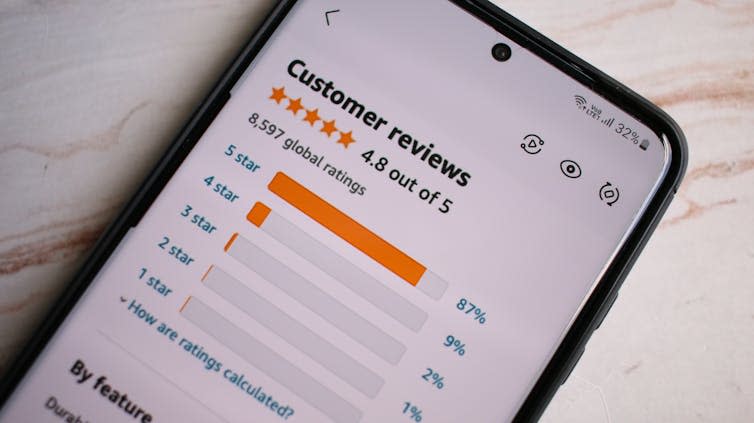You may want to check online reviews before buying something, visiting a new restaurant, or watching a new movie. Searching for what strangers think about things we might like has become a familiar part of the modern consumer experience.
So how do we know which reviews to trust? Which ones are written by honest customers sharing their real experiences, and which ones are published with malicious intent?
Because while consumer reviews can point us towards the best products and services, lurking in the shadows are deceptive reviews carefully crafted to deceive and manipulate. You can call it fake feedback.
For example, a negative fake review may be posted by a competitor to cast doubt on the quality of a particular product. Or a positive-sounding fake review may be designed by someone with a financial interest in a service to provide a dishonest boost to that service in the marketplace.
All of these can have a dramatic impact on the overall profile of a business.
Popular travel site Tripadvisor has seen a staggering influx of user-generated content in 2023, with more than 30 million reviews posted by more than 17 million members. But in this huge sea of customer feedback, 1.3 million reviews were flagged as fraud and subsequently removed.
Additionally, 33,194 businesses faced penalties for misleading practices. And in the UK, government research found that 11% to 15% of reviews in certain product categories, such as consumer electronics and home and kitchenware, were thought to be fraudulent.
breaking the code
To combat fake reviews, companies including Amazon have begun using artificial intelligence (AI) to prevent hundreds of millions of potential fake reviews from being published and ensure the reliability of the platform.
But research shows that there are many things consumers can do to protect themselves.
Trust your instincts: Trust your intuition when reviewing reviews. Genuine feedback tends to strike a balance by presenting both positive and negative aspects of the product or service. Be careful if a review seems overly positive or overly critical without any evidence.
Read between the lines: Pay attention to the language and tone used in reviews. Authentic feedback often feels personal and reflects the reviewer’s unique experience. Be wary of reviews that are generic, repetitive, or overly promotional as they may be misleading endorsements.
Verify the source: Examine the reviewer’s credentials to determine their credibility. Real reviewers often provide specific details about their interactions with the product or service, such as features, delivery timelines, or customer service encounters. Be skeptical of reviews that lack specific information.
Look for patterns: Be wary of abnormal patterns in reviews, such as sudden fluctuations of positive or negative feedback over a short period of time. These anomalies may be indicative of concerted attempts to manipulate ratings rather than actual consumer experiences.
Review critics
So, just as you can protect your computer from viruses or be alert to attempts to hijack your personal information, it’s also important to keep yourself up to date on common methods used to deceive consumers. While well-known platforms like Amazon and Tripadvisor often offer guidelines for spotting fake feedback, consumer advocacy groups and online forums dedicated to consumer awareness can provide valuable information.

Websites and platforms also have a responsibility to ensure users receive reliable information. Advances in AI technology have also introduced new tools that can help identify and flag potential fake reviews.
These AI-powered solutions play a critical role in maintaining consumer trust and market integrity by using machine learning to analyze patterns on social media platforms and identify suspicious interactions.
By investing in this type of technology, companies can more effectively combat the spread of fake reviews and maintain the credibility of their review systems. They can also increase trust and confidence in the authenticity of the reviews provided.
In the digital world, being able to distinguish between genuine feedback and deceptive confirmations is vital to making informed decisions. If you come across a comment that you suspect is fake, it is always worth flagging it to the platform or website where it was posted. By alerting authorities, you will strengthen the integrity of online review systems and help your fellow consumers make better decisions.
This article is republished from The Conversation under a Creative Commons license. Read the original article.


Nick Hajli is affiliated with Loughborough University. Nick Hajli does not work for, consult, own shares in, or receive funding from any company or organization that would benefit from this article, and has disclosed no relevant affiliations beyond his academic duties.
Nick Jennings does not work for, consult, own shares in, or receive funding from any company or organization that would benefit from this article, and has disclosed no relevant affiliations beyond his academic duties.